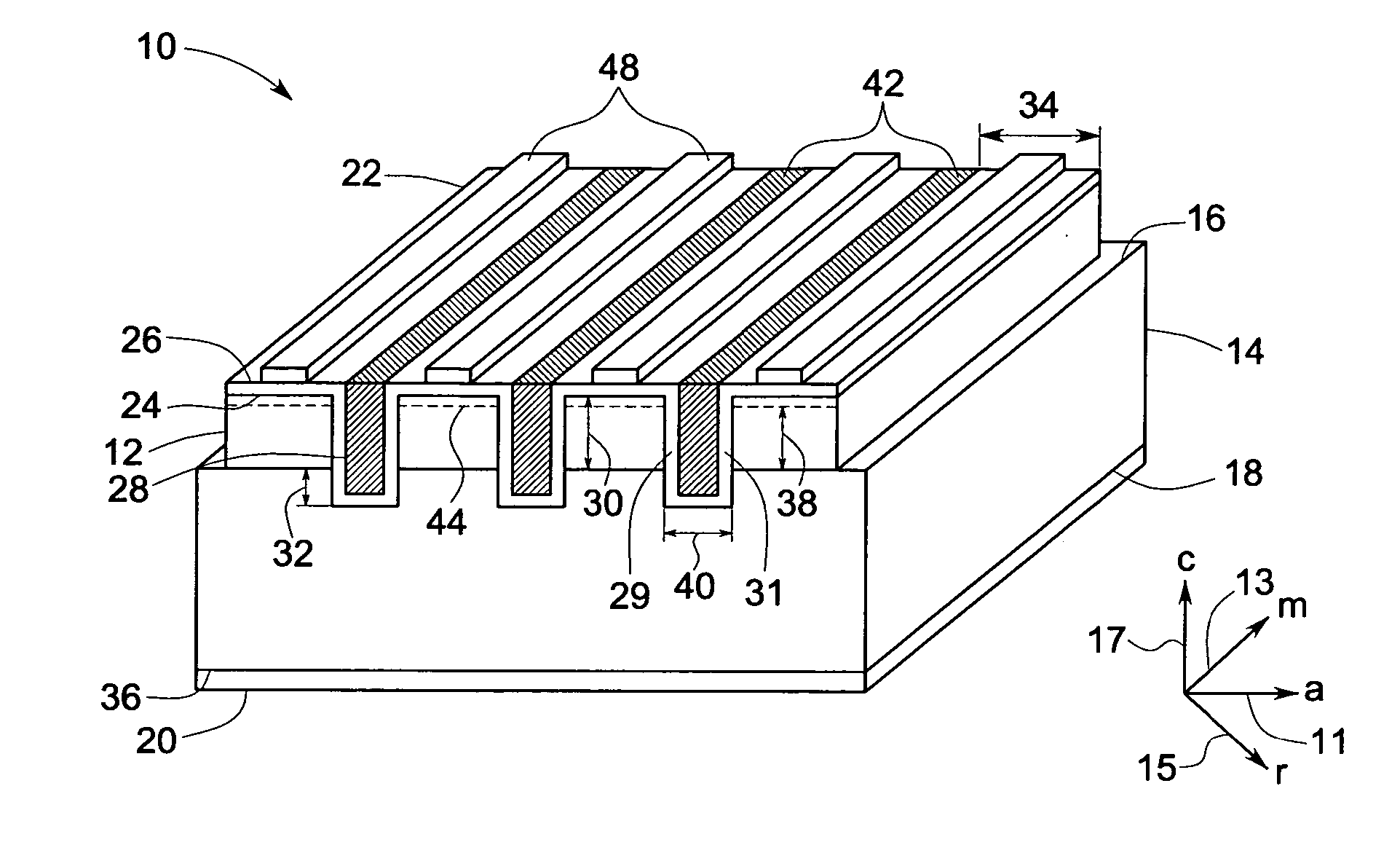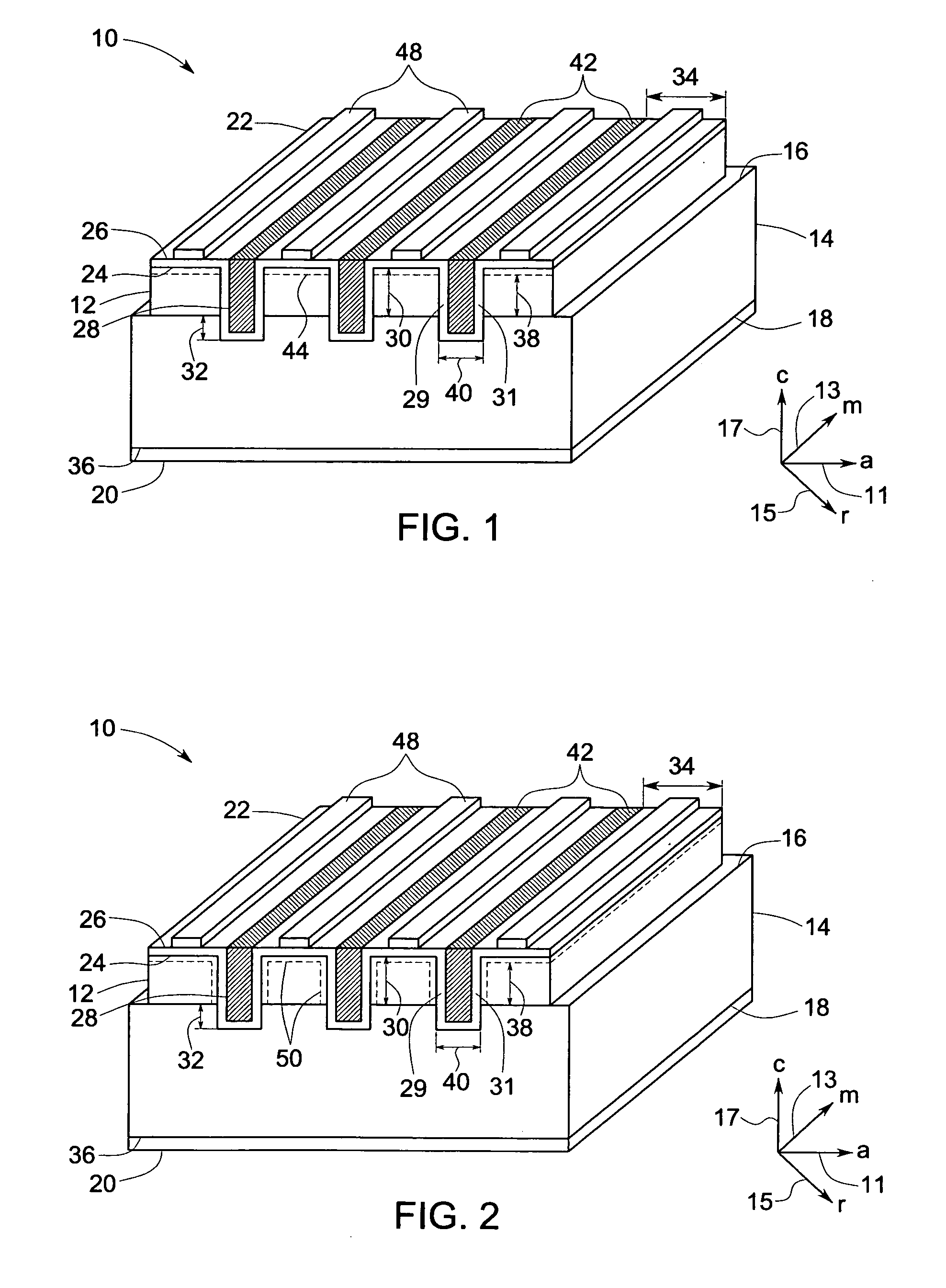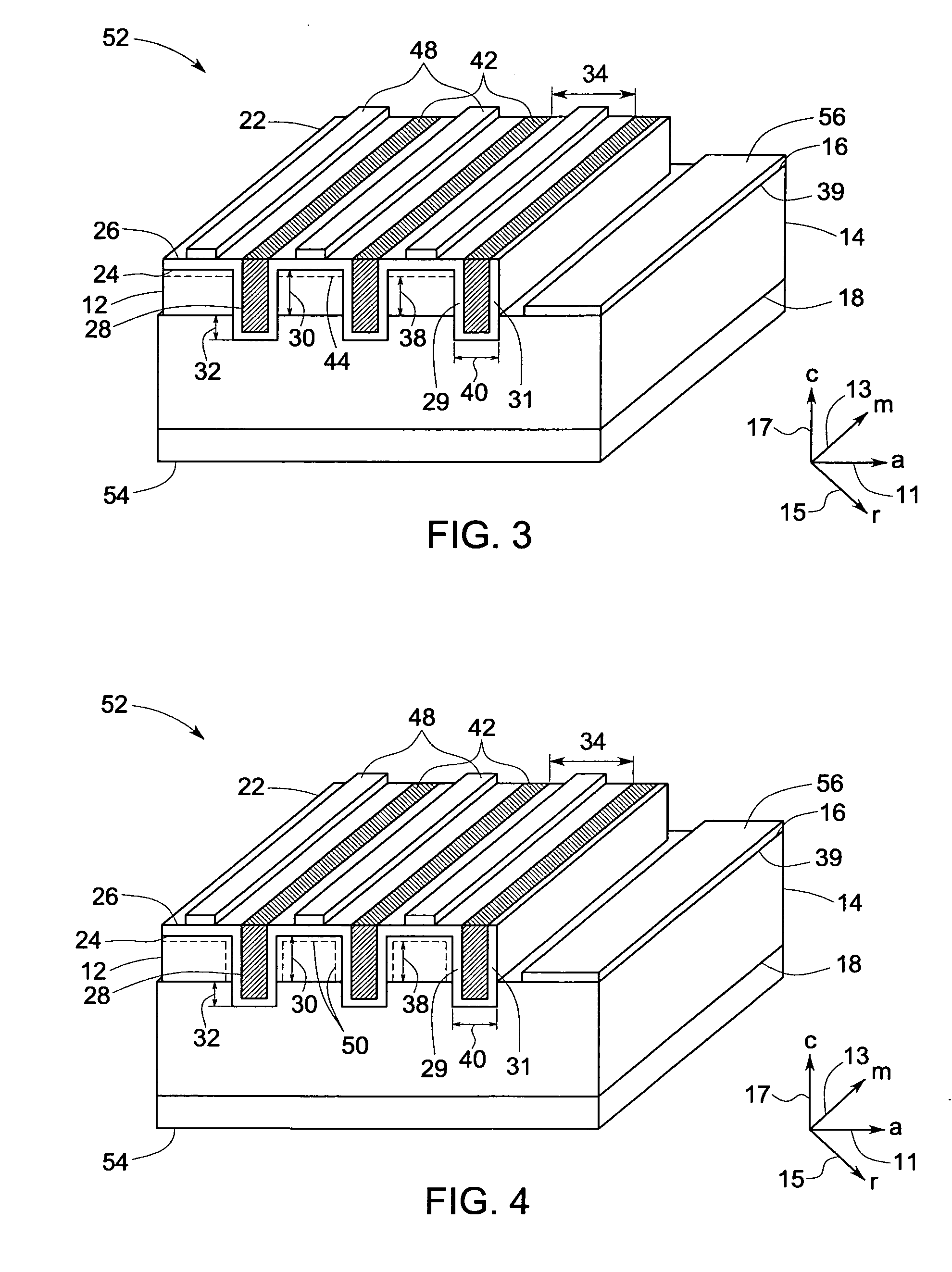Heterostructure field effect transistor and associated method
a technology of heterostructure field and transistor, applied in the direction of basic electric elements, electrical apparatus, semiconductor devices, etc., can solve the problem that hfets are not effective in switching devices
- Summary
- Abstract
- Description
- Claims
- Application Information
AI Technical Summary
Benefits of technology
Problems solved by technology
Method used
Image
Examples
example 1
EXAMPLE 1
Method of Forming a Normally-off Heterostructure Field Effect Transistor
[0078] A lateral normally-off aluminum gallium nitride-gallium nitride heterostructure field effect transistor HFET is formed. In this structure, a 3 micrometers undoped a-plane gallium nitride epilayer is formed on a substrate. Subsequently, 25 nanometers Al0.3Ga0.7N barrier layer is epitaxially grown on the a-plane gallium nitride layer. The aluminum gallium nitride layer includes a silicon delta-doped region which is located about 15 nanometers from the aluminum gallium nitride-gallium nitride interface. Next, a recess is etched in the aluminum gallium nitride layer to form a gate region approximately 10 nanometers deep, thus etching through the silicon delta-doped region in the aluminum gallium nitride layer. Next, metallization is done to deposit the conductive material of the gate. Subsequently, source and drain Ohmic contacts are formed. Since the aluminum gallium nitride-gallium nitride interfa...
example 2
EXAMPLE 2
Method of Forming a Normally-off Heterostructure Field Effect Transistor Employing a Dielectric Layer
[0079] A normally-off heterostructure field effect transistor is formed. The a-plane gallium nitride and aluminum gallium nitride layers are formed as described in the previous example. Subsequent to forming the recess for the gate electrode, a dielectric layer of 15 nanometers is formed on the aluminum gallium nitride layer by low-pressure chemical vapor deposition (LPCVD). This dielectric layer may be silicon dioxide. The metal gate electrode is formed on top of the dielectric. Next, the dielectric is etched away in the source and drain regions, and Ohmic contacts are formed to the source and drain. Using a dielectric between the gate electrode and the aluminum gallium nitride layer reduces gate leakage current during operation with positive gate-source bias voltages.
example 3
EXAMPLE 3
Method of Forming Normally-off Heterostructure Field Effect Transistor Employing a Ion-implanted Source and Drain Electrodes
[0080] In another embodiment, a lateral normally-off MOS-HFET is formed with Si-implanted source and drain contact regions. As in the previous embodiments, the a-plane gallium nitride and aluminum gallium nitride layers are formed by epitaxy. Next, the source and drain regions are ion-implanted using Silicon. Then, the aluminum gallium nitride surface is capped with a material such as aluminum nitride or silicon oxide and is annealed at 1400 degrees Celsius and 100 kilo bar at nitrogen overpressure for 30 minutes. The capping layer is then removed, and the surface is further processed as in the previous embodiment. The use of the silicon implanted source and drain regions provide a low resistance Ohmic contact to the channel layer.
PUM
 Login to View More
Login to View More Abstract
Description
Claims
Application Information
 Login to View More
Login to View More - R&D
- Intellectual Property
- Life Sciences
- Materials
- Tech Scout
- Unparalleled Data Quality
- Higher Quality Content
- 60% Fewer Hallucinations
Browse by: Latest US Patents, China's latest patents, Technical Efficacy Thesaurus, Application Domain, Technology Topic, Popular Technical Reports.
© 2025 PatSnap. All rights reserved.Legal|Privacy policy|Modern Slavery Act Transparency Statement|Sitemap|About US| Contact US: help@patsnap.com



